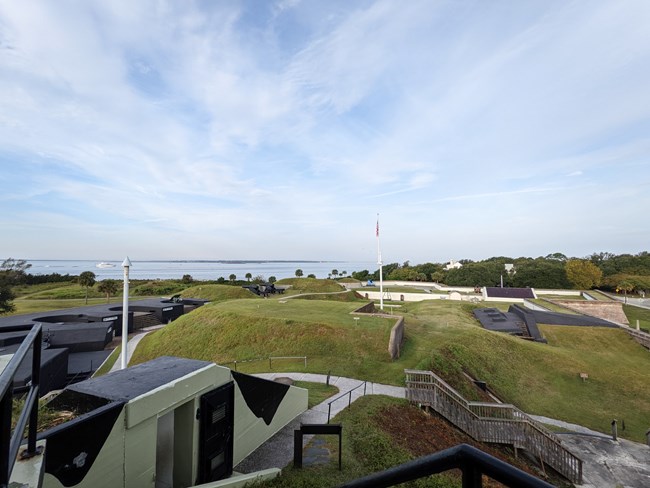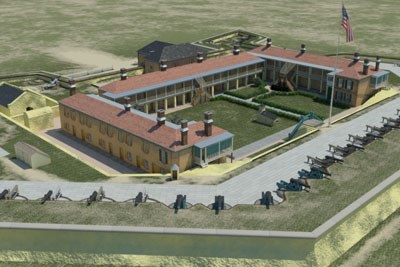
NPS Photo/ R.Claussen After the Revolution, Fort Moultrie was neglected, and by 1791 little of it remained. Then, in 1793, war broke out between Great Britain and France. The next year, Congress, seeking to safeguard American shores, authorized the first system of nationwide coastal fortifications. A second Fort Moultrie, one of twenty new forts along the Atlantic coast, was completed in 1798. It also suffered from neglect and was finally destroyed by a hurricane in 1804. By 1807 many of the other First System fortifications were in need of extensive repair. Congress responded by authorizing funds for a Second System, which included a third Fort Moultrie. By 1809 a new brick fort stood on Sullivan's Island. 
Between 1809 and 1860 Fort Moultrie changed little. The walls were altered and the weaponry was modernized, but the big improvement in Charleston's defenses during this period was the construction of Fort Sumter at the entrance of the harbor. The forts ringing Charleston Harbor - Moultrie, Sumter, Johnson, and Castle Pinckney - were meant to complement each other, but instead became opponents. For more information about Fort Moultrie in 1860, including 3D models and animation, visit Battlefields in Motion. Fort Moultrie was modernized in the 1870s. Newer, larger cannon were installed, magazines and bombproofs were built of thick concrete and then buried under tons of earth to absorb the explosion of heavy shells. In 1885, President Grover Cleveland appointed Secretary of War William C. Endicott to head a board to review the coastal defenses in light of newly developing weapons technology. This system, named for Endicott, again modernized the nation's fortifications. New batteries of concrete and steel were constructed in Fort Moultrie. Larger weapons were emplaced elsewhere on Sullivan's Island, and the old fort became just a small part of the Fort Moultrie Military Reservation that covered much of the island. As technology changed, harbor defense became more complex. The world wars brought new threats of submarine and aerial attack and required new means of defense at Fort Moultrie. These weapons also became obsolete as nuclear weapons and guided missiles altered the entire concept of national defense. Today, Fort Moultrie has been restored to show the major periods of its history from 1809 through 1947. |
Last updated: February 5, 2023
